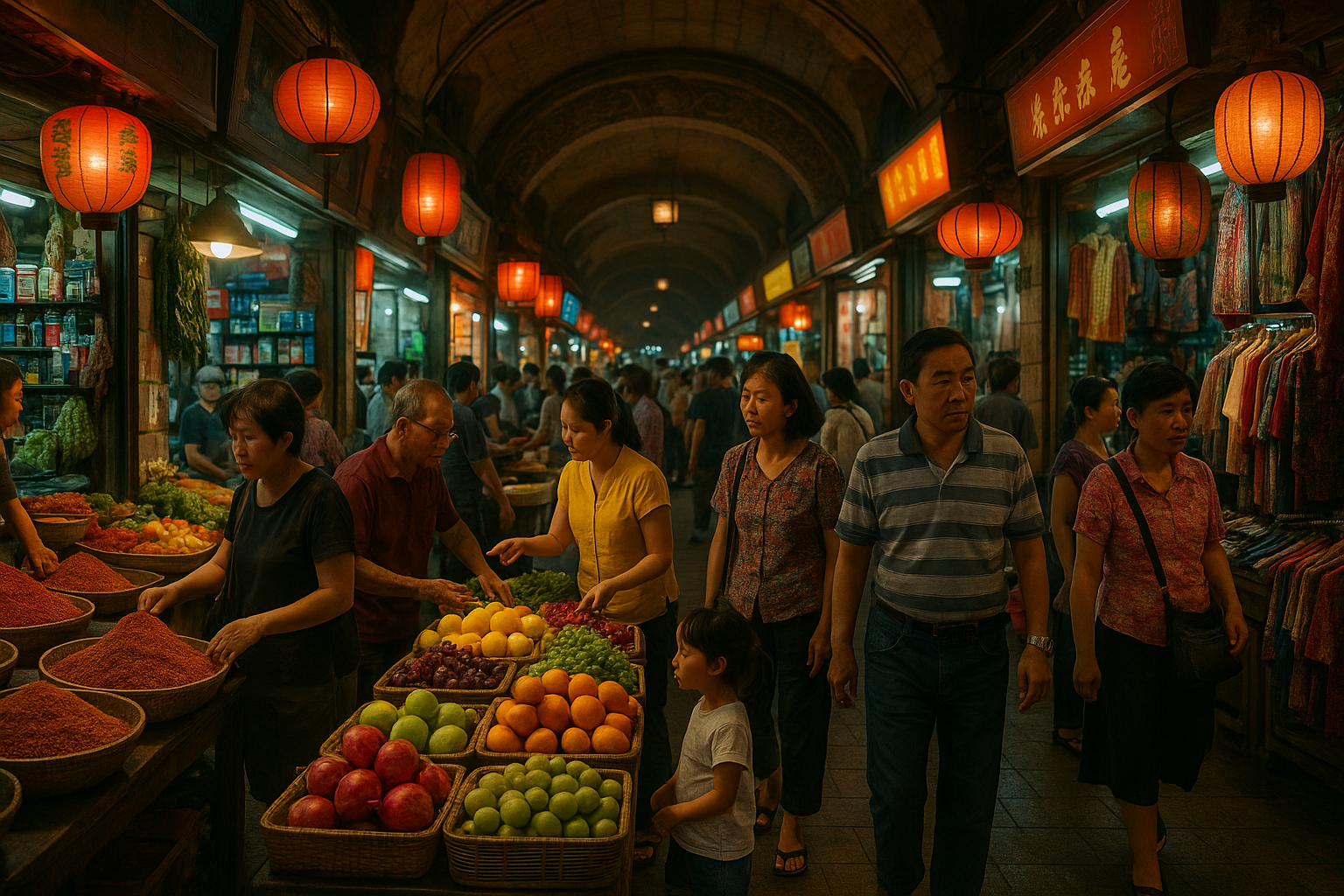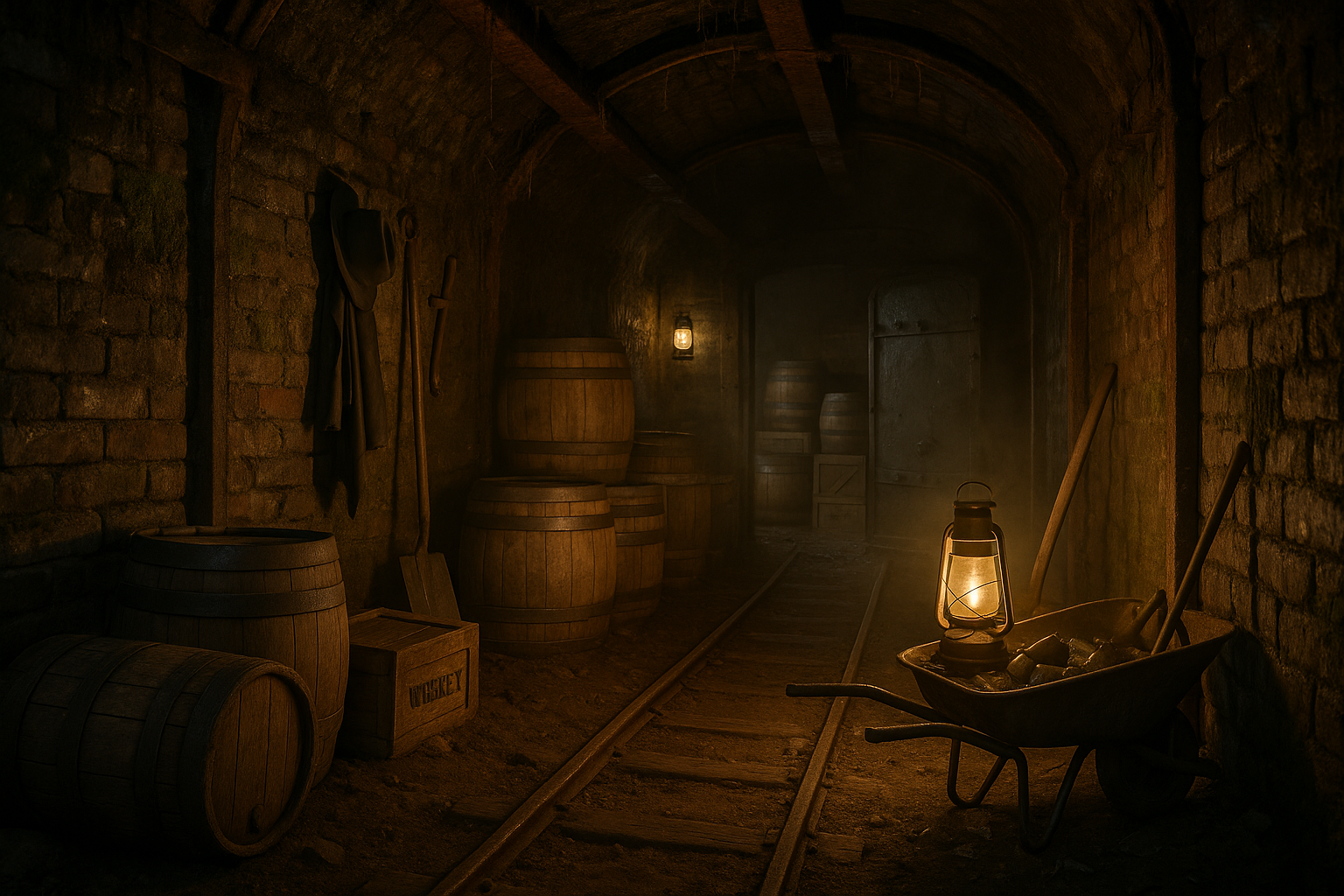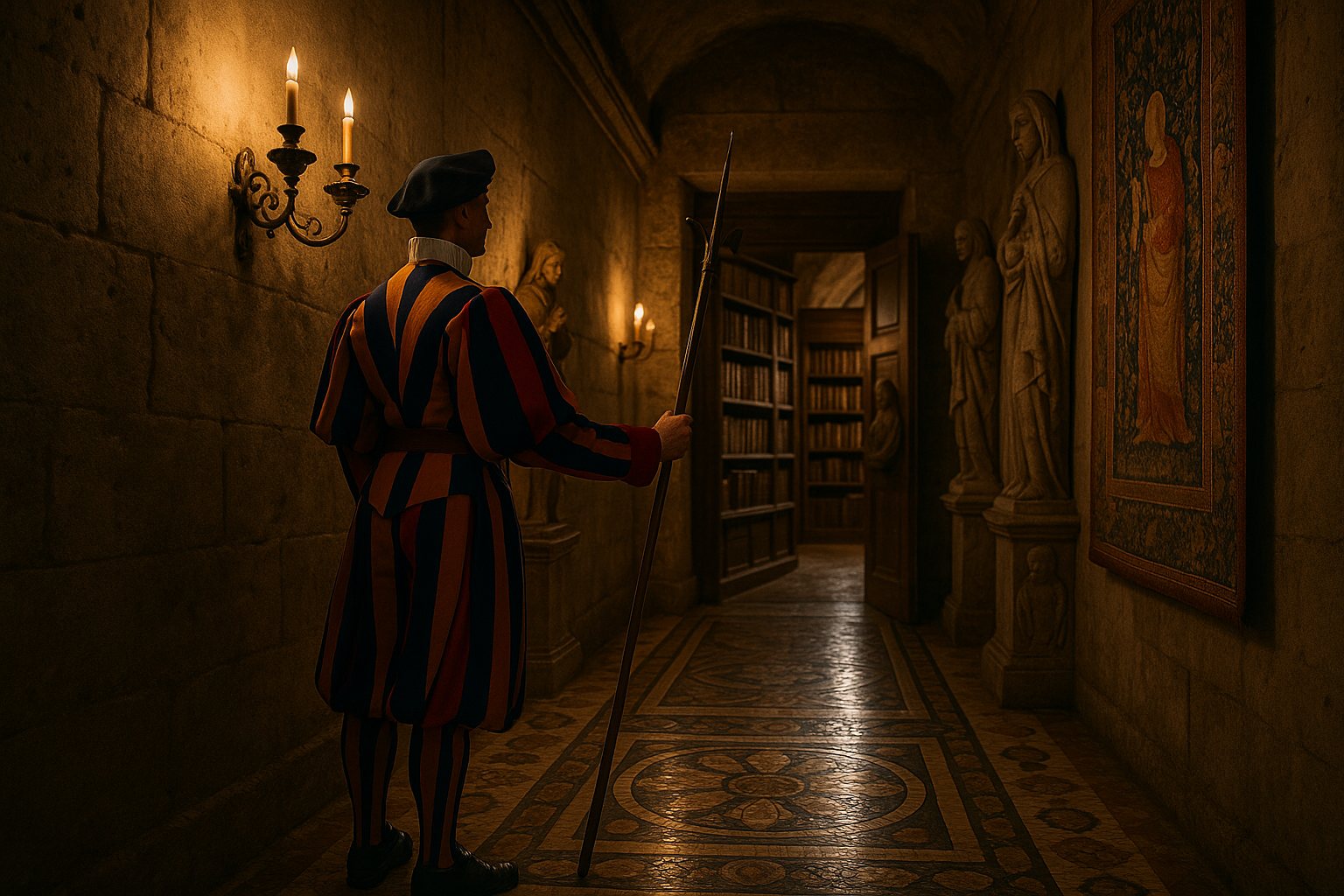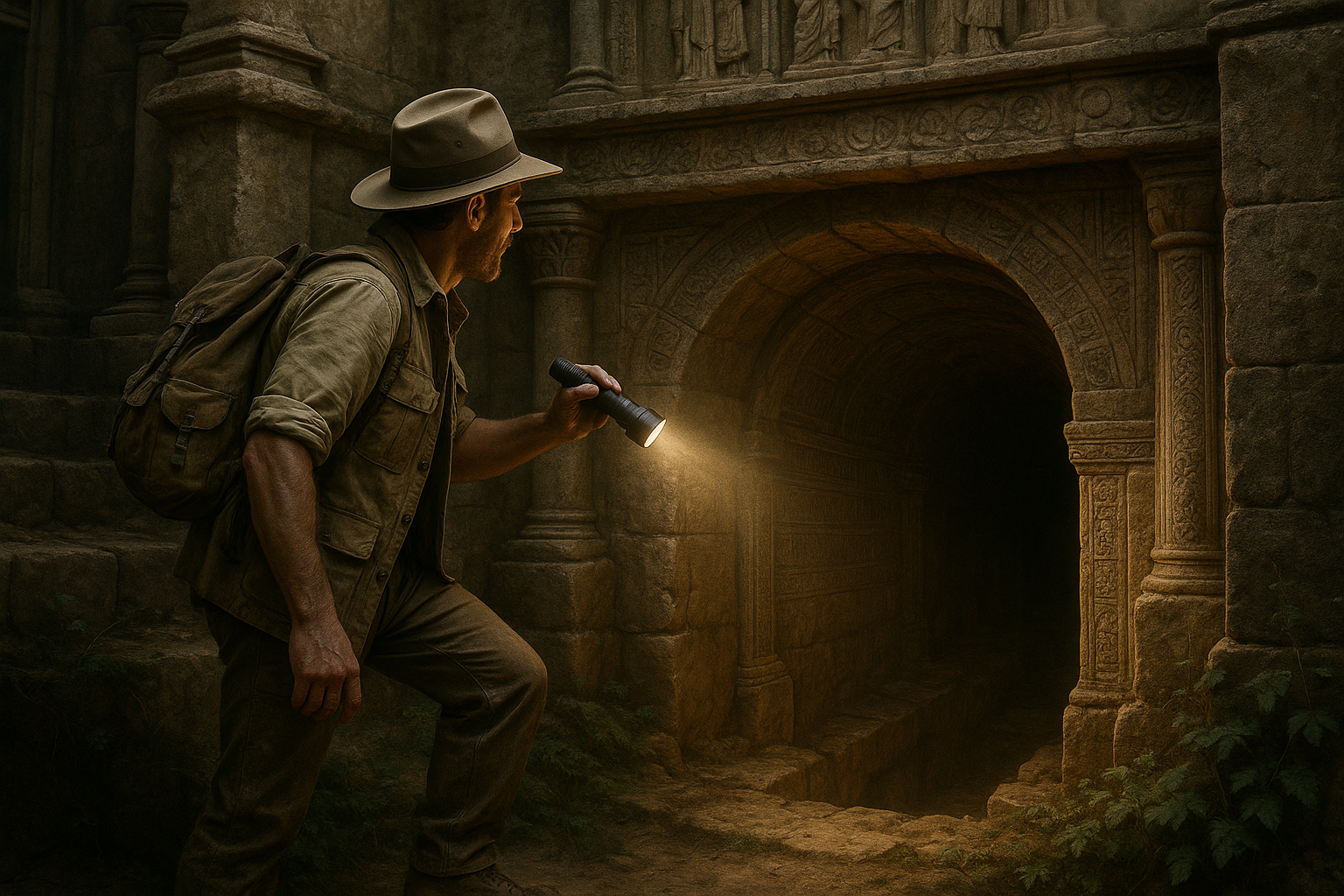In the heart of bustling urban metropolises, beneath the towering skyscrapers and amidst the cacophony of city life, lies a world pulsating with energy and creativity—a world that often goes unnoticed by the untrained eye. These are the subterranean scenes, the vibrant underground cultural spaces that serve as incubators for innovation, artistic expression, and community bonding. From hidden music venues and clandestine art galleries to secret theaters and avant-garde fashion shows, these underground havens challenge conventional norms and invite a diverse array of voices to be heard. They are the lifeblood of urban culture, breathing new life into the soul of the city and providing a sanctuary for those who dare to explore beyond the surface. 🌆
Imagine stepping into an unmarked door in a seemingly ordinary alleyway, only to find yourself enveloped in a world where music echoes off the walls and art bursts forth in vivid color. This is where the underground thrives, away from the prying eyes of mainstream society, offering a platform for emerging artists and performers to express themselves freely. In these intimate spaces, creativity knows no bounds, and the unconventional is celebrated. Whether it’s a spoken word poetry night in a dimly lit basement or an experimental film screening in an abandoned warehouse, the underground culture is a testament to the resilience and adaptability of the human spirit. It is where tradition meets innovation, and where the past is reimagined to forge a new future.
What draws people to these hidden corners of the city? For many, it’s the allure of the unknown, the excitement of discovering something unique and authentic. In a world dominated by mass media and commercial interests, the underground offers a refreshing alternative—a space where individuality and originality take center stage. These cultural enclaves are not just about entertainment; they are about creating connections and fostering a sense of belonging. They bring together people from all walks of life, transcending social and economic barriers, and uniting them through shared experiences and mutual appreciation for the arts. As cities continue to grow and evolve, these underground scenes serve as vital counterpoints, preserving the essence of what makes each metropolis truly unique.
Throughout this exploration of subterranean scenes, we will delve into the history and evolution of these cultural spaces, examining how they have adapted to changing times and societal shifts. We will uncover the stories of the visionaries who dared to create and sustain these hidden worlds, often in the face of adversity and opposition. We will also explore the impact of technology and social media on the underground scene, and how these tools have both challenged and empowered artists and organizers. Furthermore, we will consider the role of community and collaboration in these spaces, highlighting the ways in which they have become crucibles for social change and cultural innovation.
As we embark on this journey through the vibrant underground cultural spaces of urban metropolises, we invite you to open your mind to the possibilities that lie beneath the surface. Let us celebrate the creativity, diversity, and resilience that define these hidden worlds. Whether you’re a seasoned explorer of the underground or a curious newcomer, there’s always something new to discover in the depths of the city. So, join us as we peel back the layers and uncover the rich tapestry of life that thrives in the shadows—where the underground beats with a rhythm all its own. 🎶
## Introduction to Underground Cultural Spaces
In the ever-evolving tapestry of urban landscapes, the underground cultural scene emerges as a fascinating tapestry of vibrant expressions. Beneath the bustling streets of global metropolises lies a hidden world pulsating with creativity, innovation, and rebellion. This article takes you on an immersive journey into these subterranean realms, exploring the significance, diversity, and dynamics that define underground cultural spaces.
### The Origin and Evolution of Underground Culture
The roots of underground culture can be traced back to the early 20th century, when marginalized communities sought refuge and expression away from mainstream scrutiny. Initially formed as a reaction to societal norms, these spaces evolved into cradles of innovation, fostering groundbreaking movements in art, music, and literature. From the jazz clubs of Harlem to the punk scenes of London, underground spaces have continually reshaped cultural landscapes.
One of the defining characteristics of underground culture is its fluidity. Unlike mainstream culture, which often adheres to rigid structures, underground scenes thrive on experimentation and individuality. This fluidity allows for a constant influx of fresh ideas and influences, creating a dynamic environment where new genres and styles are born. The underground is a breeding ground for avant-garde movements, offering a platform for voices that challenge the status quo.
#### Underground Music: A Sonic Revolution
Music has always been a cornerstone of underground culture, serving as both a form of expression and a catalyst for social change. From the raw energy of punk rock to the hypnotic beats of techno, underground music defies categorization, transcending boundaries to create a unique sonic experience.
The birth of electronic music in the late 20th century marked a significant turning point for underground culture. As technology advanced, artists gained access to new tools and platforms, leading to the emergence of genres like house, techno, and drum and bass. These genres found a home in underground clubs and warehouses, where like-minded individuals gathered to dance, connect, and escape the confines of everyday life.
The allure of underground music lies in its authenticity. Unlike commercial music, which is often driven by profit motives, underground artists prioritize creativity and self-expression. This commitment to artistic integrity resonates with audiences seeking something genuine and meaningful.
### The Role of Art in Shaping Underground Spaces
Art plays a pivotal role in defining the character and atmosphere of underground cultural spaces. From graffiti-covered walls to immersive installations, visual art serves as a powerful medium for self-expression and storytelling. Artists use these spaces to push boundaries, challenge conventions, and provoke thought.
In the context of underground culture, art is not confined to galleries or museums; it exists in the nooks and crannies of urban landscapes. Street art, in particular, has become synonymous with the underground scene. Artists use public spaces as their canvas, transforming mundane cityscapes into vibrant works of art. This form of expression is inherently rebellious, challenging the commercialization of art and reclaiming public spaces for the people.
Artistic collaborations are another hallmark of underground culture. In these spaces, artists from diverse disciplines come together to create immersive experiences that transcend traditional boundaries. Whether it’s a multimedia installation or a live performance, these collaborations blur the lines between different art forms, offering audiences a multisensory journey.
#### The Impact of Digital Technology on Underground Art
The digital age has revolutionized the way underground art is created and consumed. Social media platforms and online communities have provided artists with new avenues to showcase their work and connect with audiences worldwide. This democratization of art has led to a proliferation of underground movements, each with its unique aesthetic and message.
Digital technology has also opened up new possibilities for artistic expression. Virtual reality (VR) and augmented reality (AR) have become powerful tools for creating immersive experiences that transport audiences to otherworldly realms. Artists are now able to experiment with new mediums and techniques, pushing the boundaries of what is possible in the realm of underground art.
For those interested in exploring the intersection of digital technology and underground art, check out the video below:
[Digital Underground Art](https://www.youtube.com/watch?v=3jZ5vnv-LZc)
### The Social and Political Dimensions of Underground Spaces
Underground cultural spaces have long served as platforms for social and political activism. In these environments, individuals can freely express their dissent and challenge the dominant narratives imposed by mainstream society. Whether through music, art, or literature, underground scenes provide a voice for the marginalized and disenfranchised.
Historically, underground movements have been at the forefront of social change. The civil rights movement, feminist movements, and LGBTQ+ rights movements all found allies in underground spaces, where activists could gather, organize, and strategize. These spaces became breeding grounds for revolutionary ideas, sparking discussions and debates that would ultimately shape the course of history.
#### Underground Spaces as Safe Havens
One of the most significant contributions of underground cultural spaces is their role as safe havens for marginalized communities. In a world where mainstream society often marginalizes those who deviate from the norm, underground spaces offer a sense of belonging and acceptance. Here, individuals can freely express their identities without fear of judgment or persecution.
For many, underground spaces are a refuge from the pressures of conformity. They provide an environment where individuals can explore their true selves, experiment with new ideas, and connect with like-minded people. This sense of community and solidarity is a powerful force, fostering resilience and empowerment among those who feel alienated by mainstream culture.
### The Future of Underground Cultural Spaces
As urban landscapes continue to evolve, so too will underground cultural spaces. The challenges and opportunities presented by globalization, technology, and social change will shape the future of these vibrant communities. While the underground will always retain its rebellious spirit, it will also adapt to the shifting dynamics of the modern world.
One potential future for underground spaces lies in their integration with mainstream culture. As more people become aware of the unique offerings of the underground, there is a growing desire to incorporate these elements into the broader cultural landscape. This integration presents both opportunities and challenges, as underground communities strive to maintain their authenticity while reaching a wider audience.
#### The Rise of Hybrid Spaces
Hybrid spaces, which blend elements of the underground with mainstream culture, are emerging as a new frontier in urban environments. These spaces offer the best of both worlds, combining the creativity and authenticity of the underground with the resources and visibility of the mainstream.
In hybrid spaces, artists and creators have the freedom to experiment and innovate while still reaching a broader audience. This fusion of underground and mainstream elements creates a dynamic environment where new ideas can flourish, and cultural boundaries can be redefined.
As we look to the future, the evolution of underground cultural spaces will continue to captivate and inspire. These hidden realms will remain a testament to the power of creativity, resilience, and the enduring human spirit.
For a deeper dive into the dynamic world of underground spaces, explore the video by [CityLab](https://www.youtube.com/watch?v=3R7Fh96o5fQ).
Exploring the Impact of Underground Spaces
Underground cultural spaces have a profound impact on the communities and individuals who inhabit them. They serve as incubators for creativity, platforms for social change, and safe havens for those seeking refuge from mainstream society. Understanding the significance of these spaces requires an exploration of their multifaceted impact on various aspects of urban life.
The Economic Influence of Underground Spaces
While often overlooked, underground cultural spaces contribute significantly to the local economy. These venues attract a diverse array of visitors, from locals to tourists, who spend money on tickets, merchandise, food, and drinks. The ripple effect extends to surrounding businesses, including restaurants, hotels, and transportation services, all of which benefit from the influx of patrons.
| Aspect | Impact |
|---|---|
| Local Economy | Boosts revenue through increased patronage and tourism. |
| Employment | Creates jobs in entertainment, hospitality, and retail sectors. |
| Cultural Enrichment | Fosters diversity and creativity, enhancing the city’s cultural appeal. |
Community Building and Social Connectivity
At their core, underground cultural spaces are about community. They provide a platform for individuals from diverse backgrounds to come together, share experiences, and build connections. In an increasingly disconnected world, these spaces offer a sense of belonging and camaraderie that is often missing in mainstream society.
- Promotes social interaction and networking opportunities.
- Encourages collaboration and cross-cultural exchanges.
- Provides a support system for marginalized groups.
For those interested in exploring more about community building in underground spaces, check out the video titled “The Power of Subculture” by [Vox](https://www.youtube.com/watch?v=H3kBbpD8fM8).
Cultural Preservation and Innovation
Underground cultural spaces play a crucial role in preserving and innovating cultural heritage. They serve as repositories of knowledge and tradition, ensuring that cultural practices and art forms are passed down to future generations. At the same time, these spaces are hotbeds of innovation, where artists and creators push the boundaries of what is possible.
- Preserves cultural heritage and traditions.
- Encourages experimentation and artistic innovation.
- Provides a platform for emerging artists to gain recognition.
As we continue to uncover the layers of underground cultural spaces, it becomes evident that their impact extends far beyond the confines of their physical boundaries. These hidden realms are integral to the fabric of urban life, shaping the way we experience and interact with the world around us.
### Conclusion
The exploration of underground cultural spaces reveals a world teeming with creativity, resilience, and transformation. These hidden realms, nestled beneath the surface of urban metropolises, offer a sanctuary for those seeking to challenge conventions and explore new dimensions of expression. Through the lens of music, art, and activism, underground spaces shape the cultural landscapes of our cities, breathing life into the shadows and illuminating the power of the human spirit. As we continue to uncover and celebrate these vibrant communities, we are reminded of the enduring legacy of the underground—a testament to the transformative potential of creativity and the indomitable spirit of those who dare to defy the ordinary.
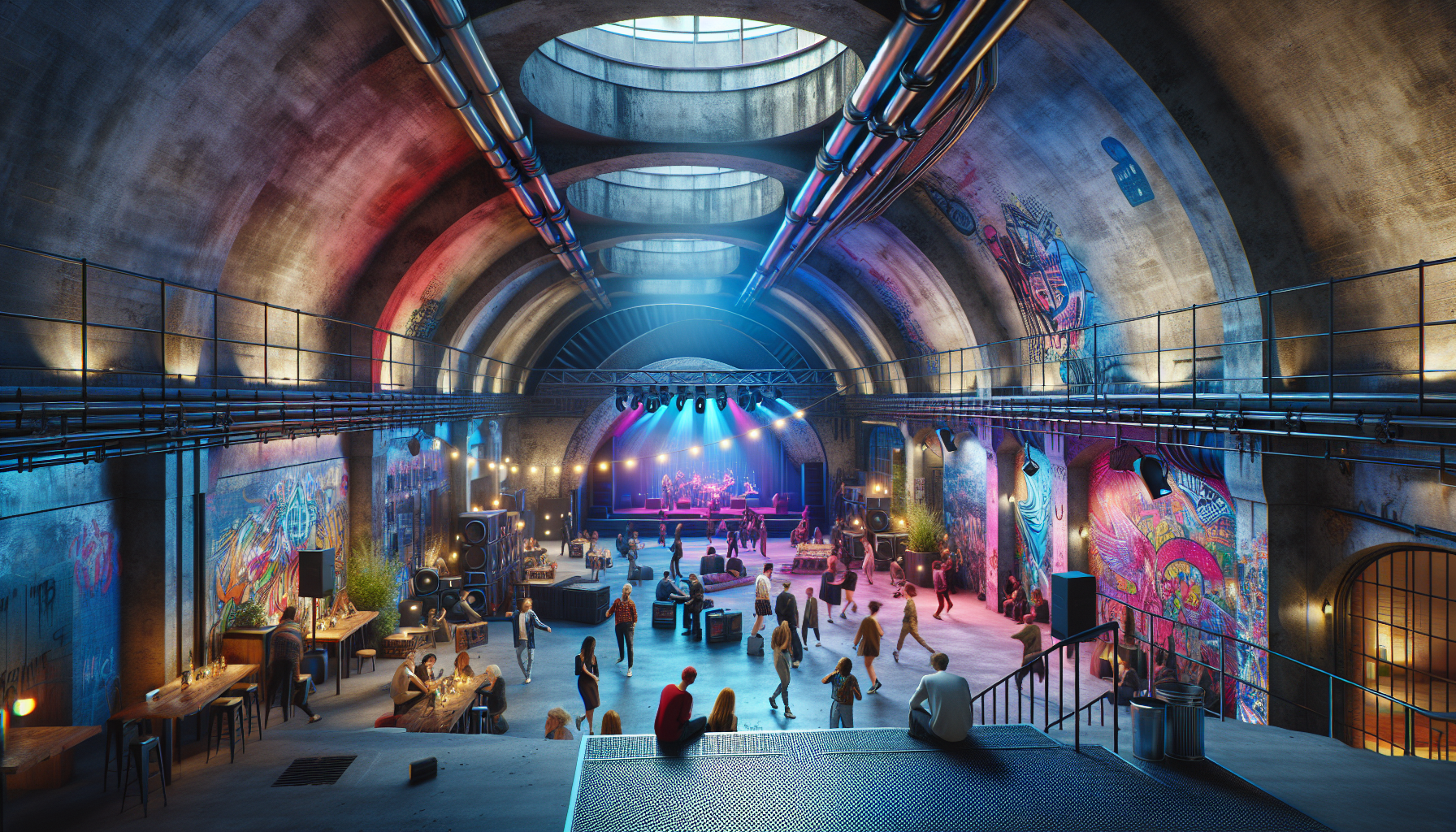
Conclusion
In conclusion, “Subterranean Scenes: Uncovering the Vibrant Underground Cultural Spaces of Urban Metropolises” has taken us on an enlightening journey through the hidden layers of our urban environments. Throughout this article, we have explored the intricate tapestry of underground cultural spaces that thrive beneath the surface of our bustling cities. These spaces, often obscured from mainstream view, serve as vital incubators of creativity, innovation, and community.
Firstly, we delved into the historical context of underground cultural scenes, tracing their roots back to times when alternative voices sought refuge away from the restrictive norms of society. From the speakeasies of the Prohibition era to the bohemian enclaves of the 20th century, these hidden venues have long been sanctuaries for the unconventional and the avant-garde. They have provided a platform for subcultures to flourish, challenging societal boundaries and pushing the limits of artistic expression.
Secondly, we examined the contemporary significance of these underground spaces. In today’s fast-paced, digitally-driven world, the physicality and intimacy of underground venues offer a refreshing counterpoint to virtual interactions. They foster genuine human connections and provide a breeding ground for new ideas. Whether it’s a hidden jazz club, an experimental theater, or a clandestine art gallery, these spaces nurture diversity and innovation, enriching the cultural fabric of our cities.
Moreover, we highlighted the challenges faced by these underground scenes. Gentrification, commercial pressures, and regulatory hurdles often threaten their existence. Yet, despite these obstacles, they persist, adapting and evolving to meet the changing needs of their communities. The resilience of these spaces underscores their importance as cultural touchstones in urban life.
The exploration of underground cultural spaces also revealed their role in shaping urban identity. These venues are not just physical locations; they are manifestations of a city’s soul. They capture the spirit of rebellion, creativity, and diversity that defines metropolitan life. By supporting and preserving these spaces, we are safeguarding the cultural heritage and vibrancy of our cities for future generations.
As we reflect on the vibrancy and significance of underground cultural scenes, it is crucial to recognize their role in fostering inclusivity and diversity. They provide a voice to the marginalized and a stage for the unheard. By offering a space where differences are celebrated rather than censored, they contribute to a more equitable and harmonious society.
Now, more than ever, it is essential for individuals, communities, and policymakers to recognize the value of these subterranean treasures. By attending events, supporting local artists, and advocating for policies that protect these spaces, we can ensure that they continue to thrive. Let’s celebrate the creativity, innovation, and resilience that define these underground scenes.
We encourage you, dear reader, to delve deeper into your city’s underground culture. Attend a secret gig, explore a hidden gallery, or participate in a late-night poetry reading. Engage with these spaces and the vibrant communities that inhabit them. By doing so, you contribute to the sustainability of these cultural havens and enrich your own understanding of the urban landscape.
Feel free to share your experiences and thoughts in the comments section below. Your insights could inspire others to explore and appreciate the underground cultural scenes in their own cities. And if you found this article enlightening, consider sharing it with your friends and networks to spread the word about the hidden gems that lie beneath our cities’ surfaces.
For those interested in further research, numerous resources are available online to expand your understanding of underground cultural spaces. Websites like [Culture Trip](https://theculturetrip.com) and [Atlas Obscura](https://www.atlasobscura.com) offer fascinating insights into the world’s lesser-known cultural destinations.
In conclusion, the vibrant underground cultural scenes of urban metropolises are more than just physical spaces; they are dynamic ecosystems that nurture creativity, foster community, and celebrate diversity. By supporting and engaging with these spaces, we contribute to the cultural richness of our cities and help preserve their unique character for generations to come. Let us embrace the spirit of exploration and discovery, and together, uncover the vibrant world that lies beneath our feet. 🌆✨
Toni Santos is a visual storyteller and artisan whose work explores the quiet power of what lies beneath. With a deep fascination for subterranean and hidden architecture, Toni uncovers the layers, voids, and forgotten spaces that shape our built environment from the shadows.
His art is a journey through the unseen — from ancient underground chambers to sealed passageways, service tunnels, and foundations buried in time. Each creation tells a story of silence, secrecy, and structure — revealing how absence and concealment can be just as meaningful as what’s visible above ground.
Whether working through visual compositions, architectural studies, or symbolic handcrafted pieces, Toni captures the soul of hidden spaces. His work bridges art and archaeology, blending design with discovery. Trained in visual design and traditional techniques, Toni creates with intention. His pieces don’t just depict — they interpret, inviting viewers to rethink what space, memory, and architecture mean when they’re hidden from view.
As the creative force behind Vizevex, Toni shares this perspective through curated visual narratives, symbolic collections, and interpretive essays that give voice to the quiet geometries beneath our feet.
His work is a tribute to:
The mystery of spaces built to be forgotten
The symbolism embedded in foundations, voids, and passageways
The timeless connection between human intention and hidden structure
Whether you’re an artist, an urban explorer, or someone fascinated by the unseen frameworks that support our world, Toni invites you into a realm where architecture becomes myth — one corridor, one layer, one buried story at a time.


